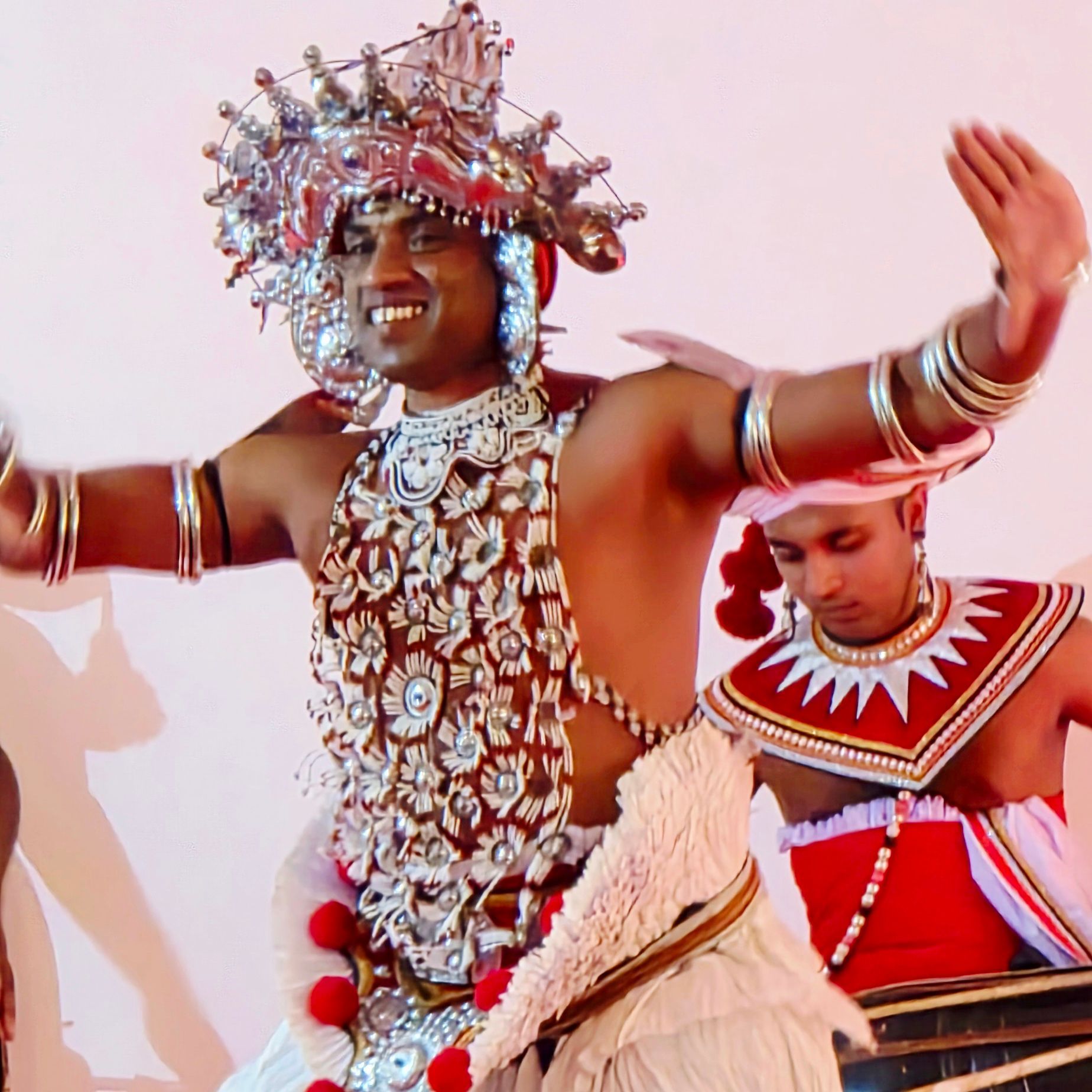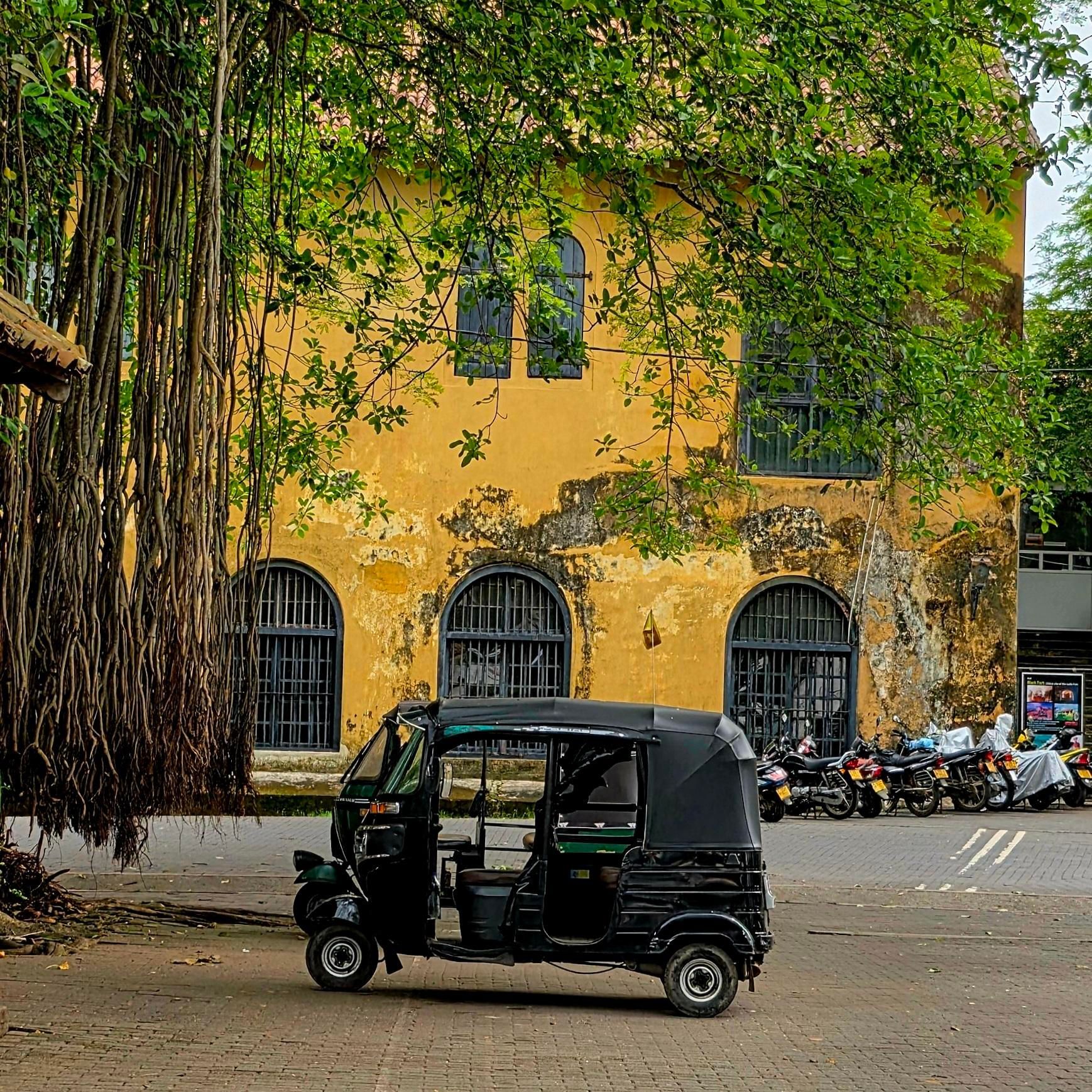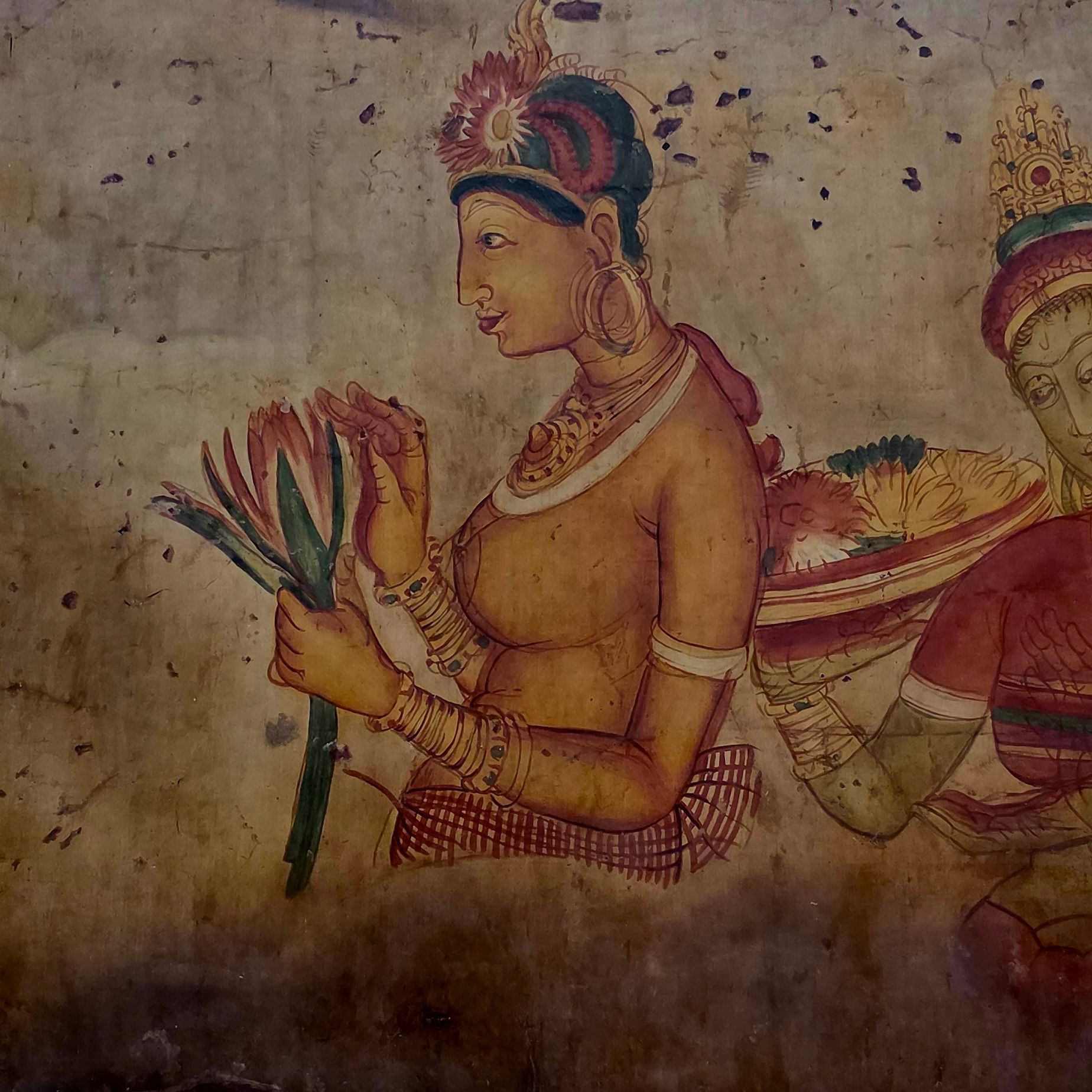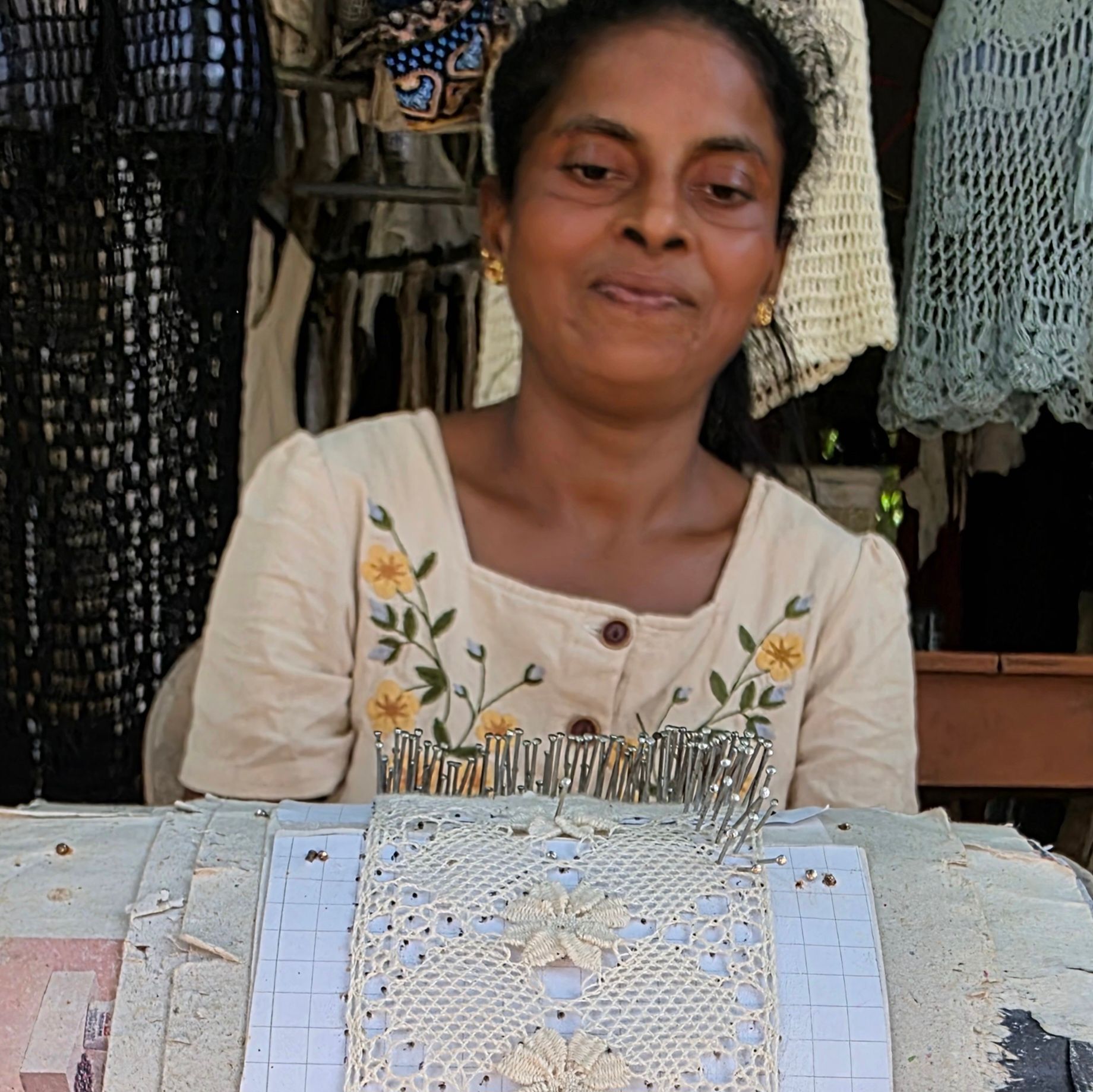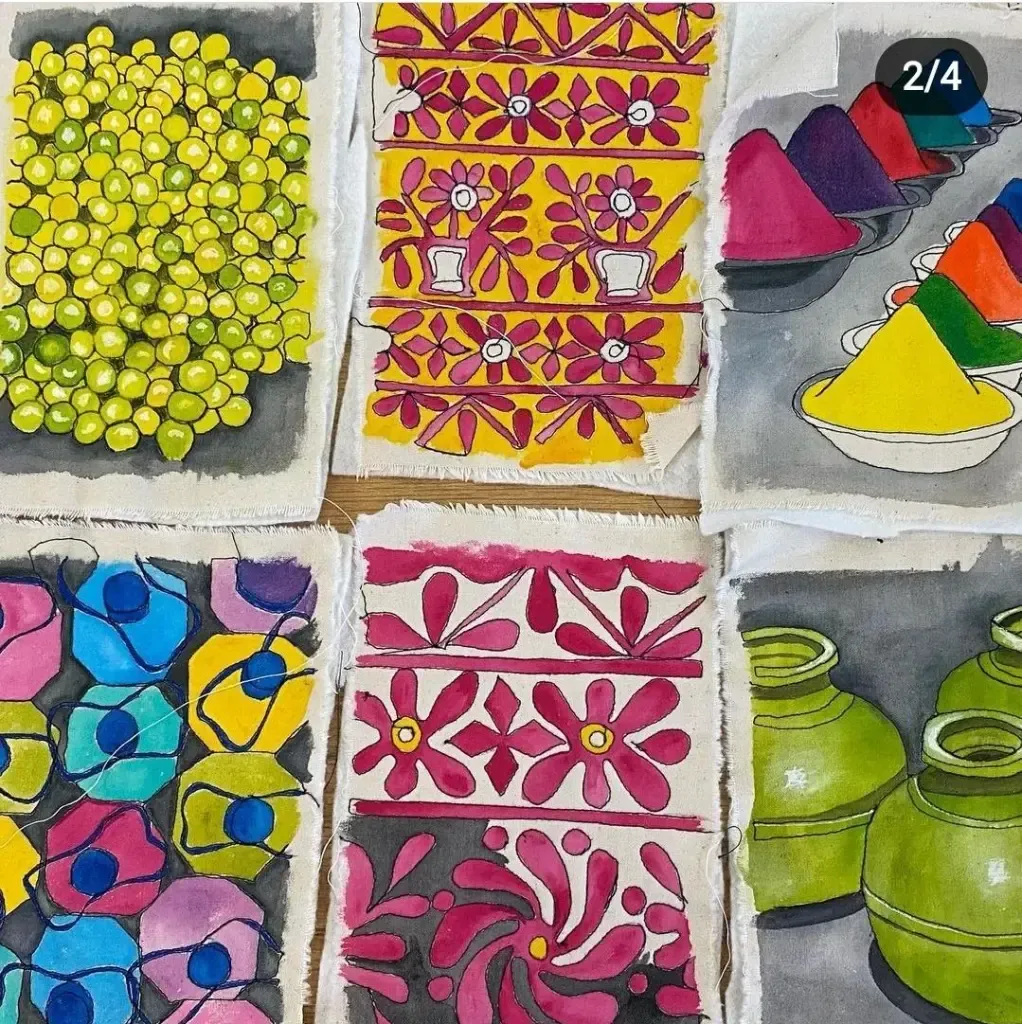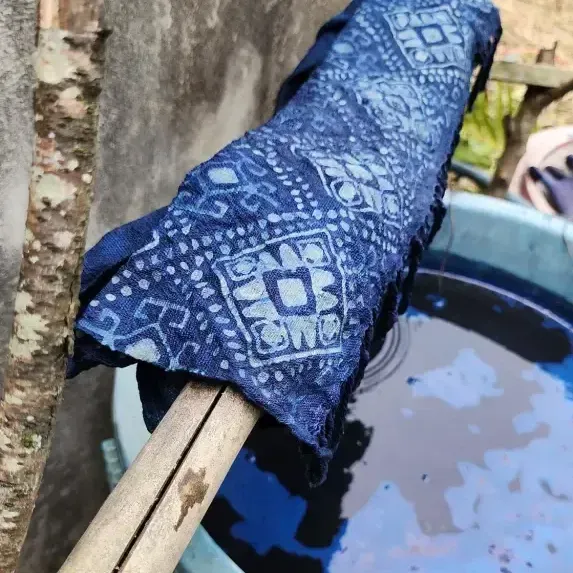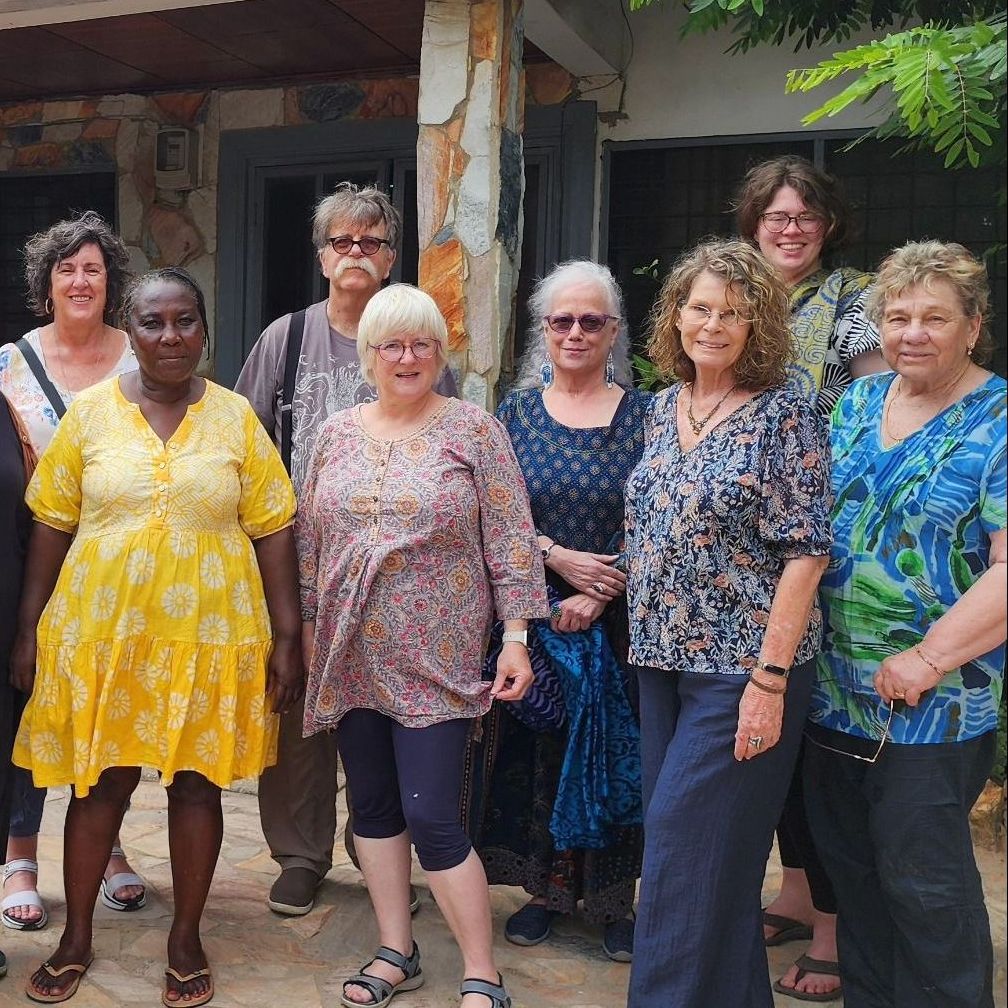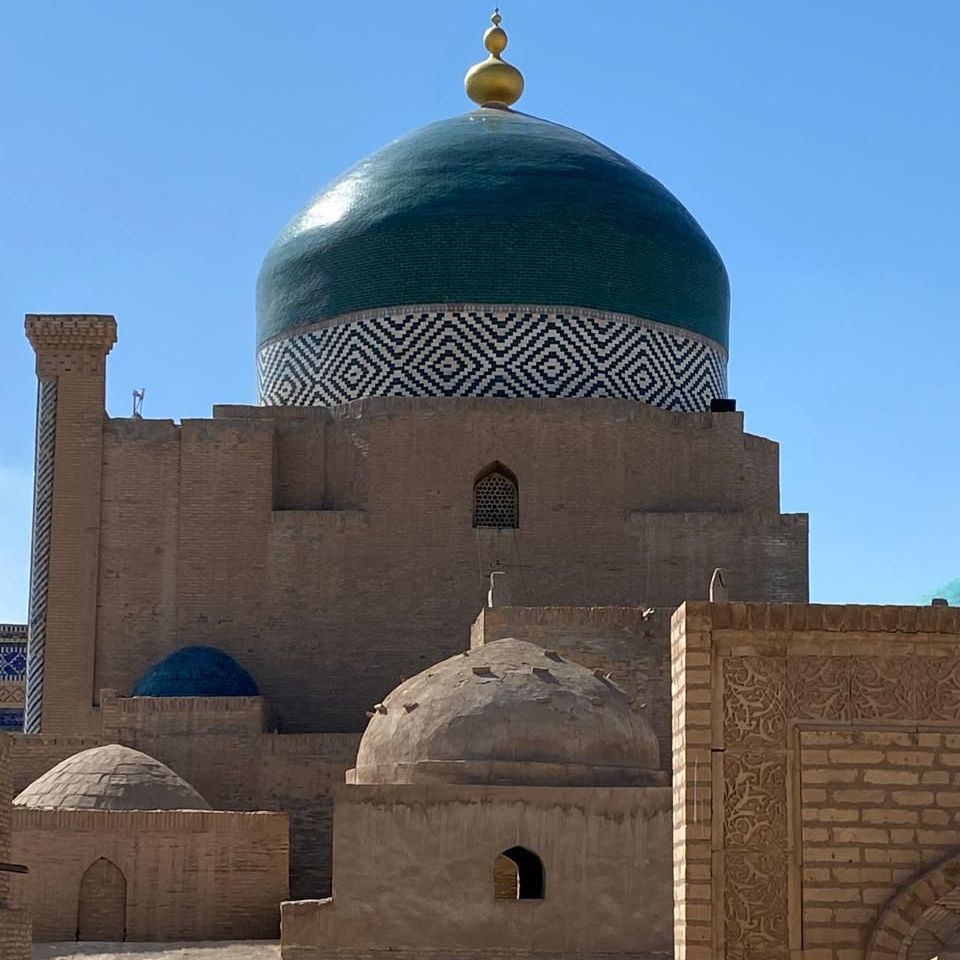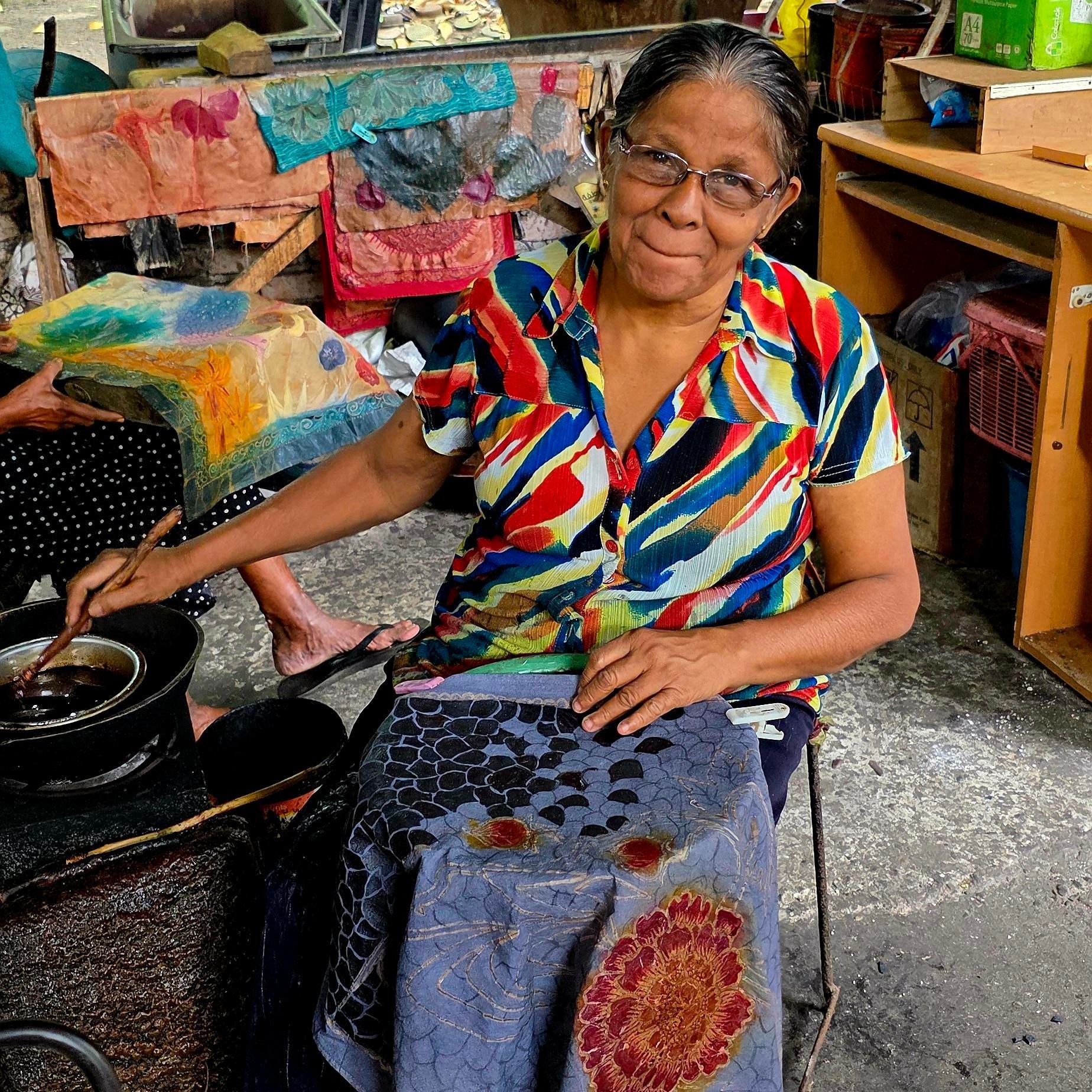
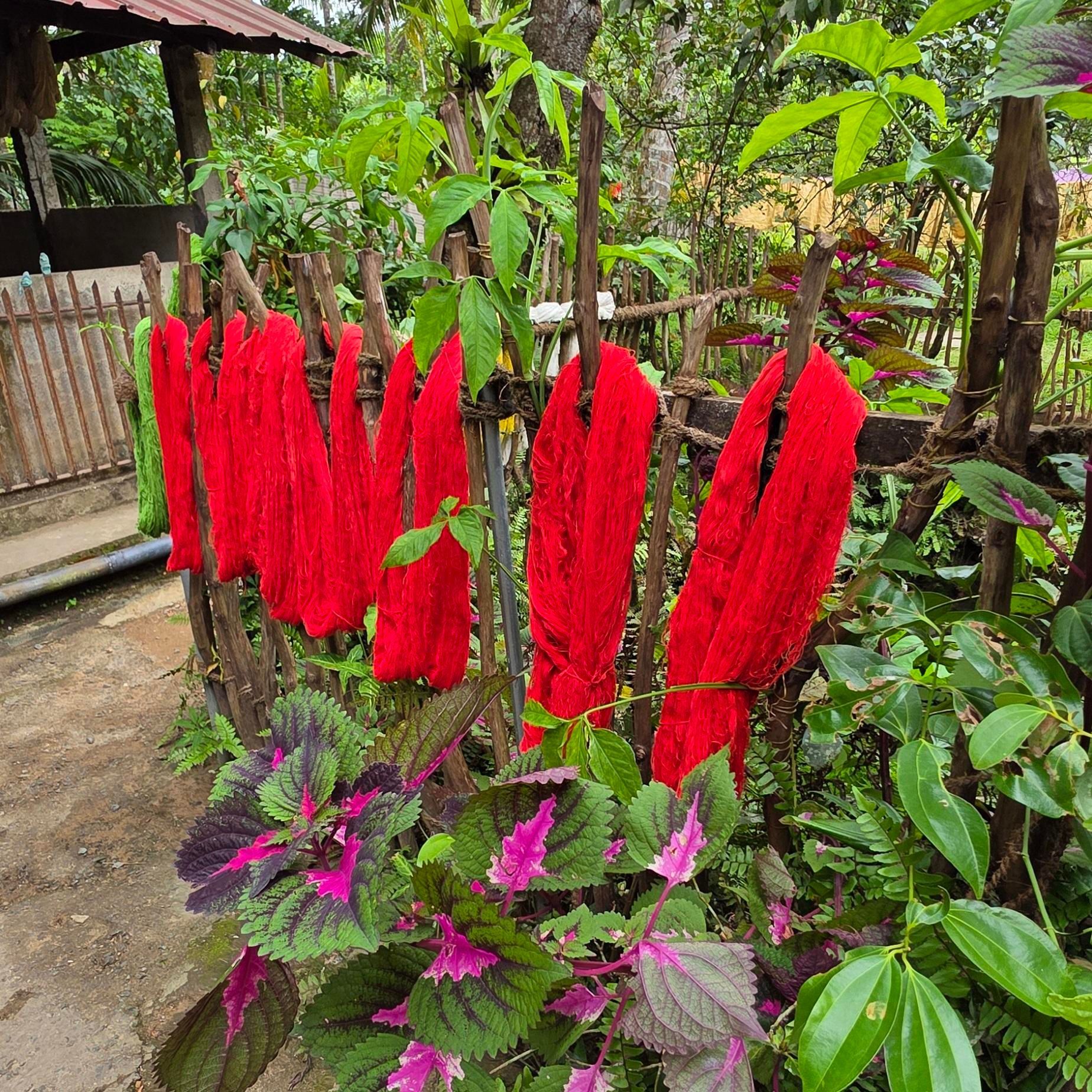
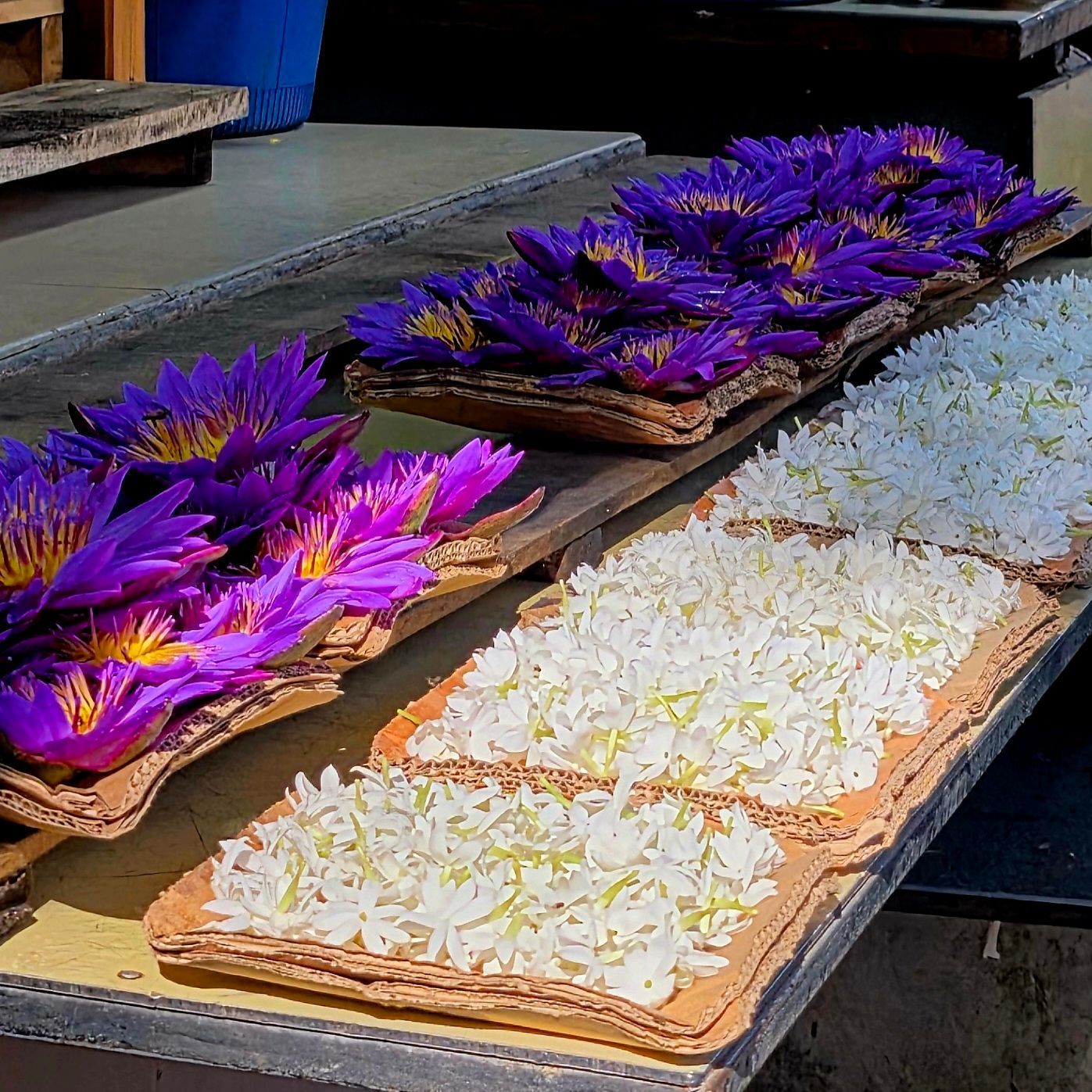
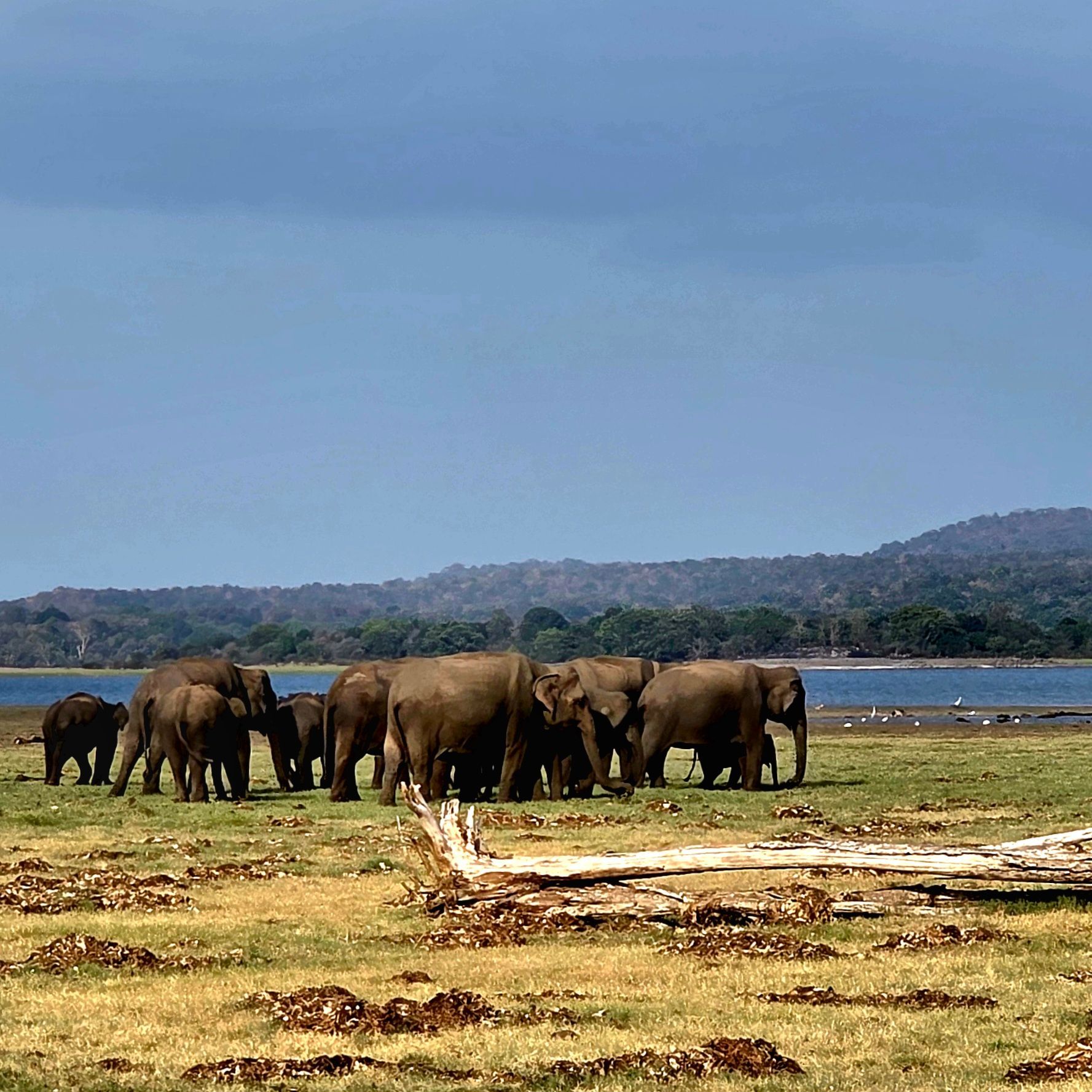
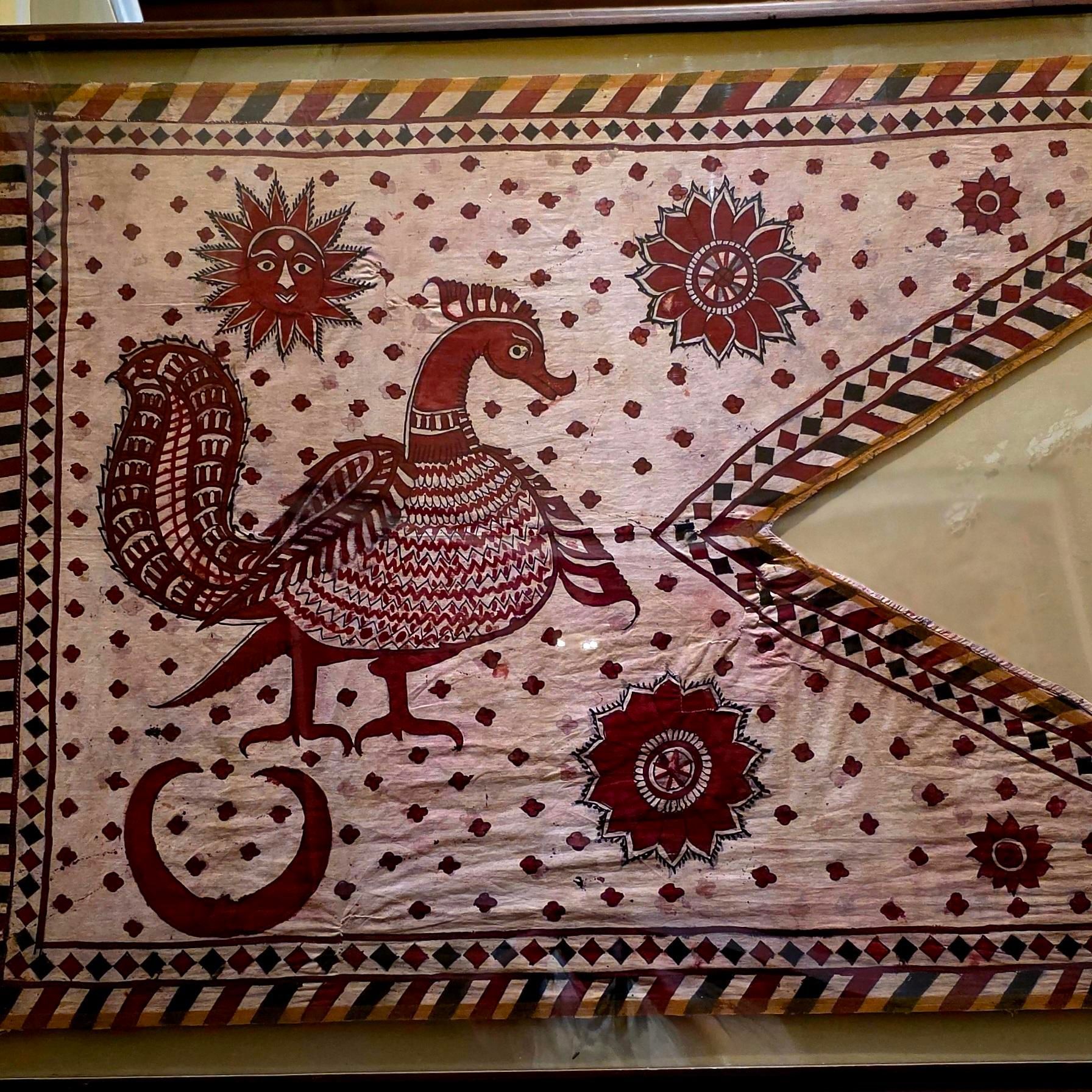
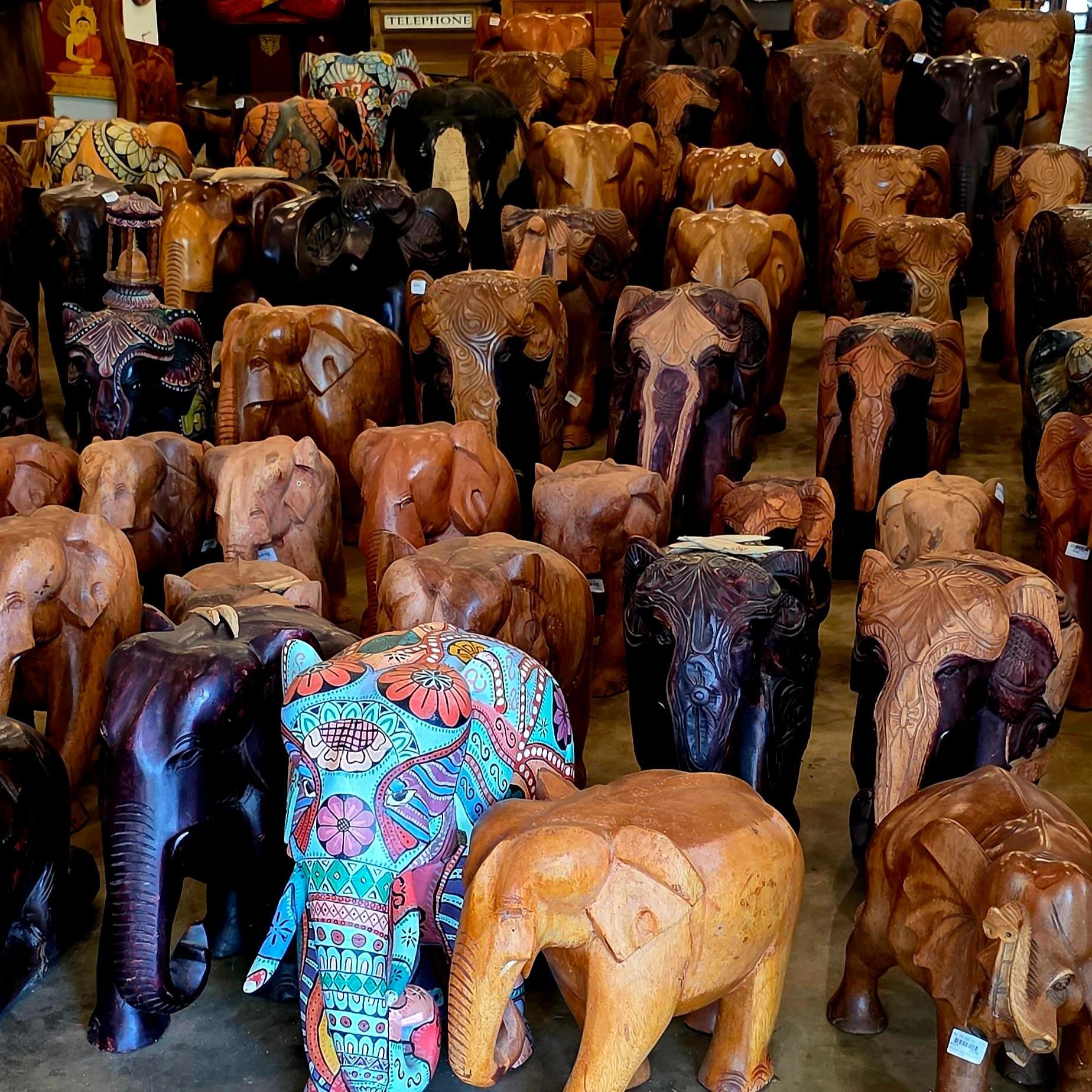
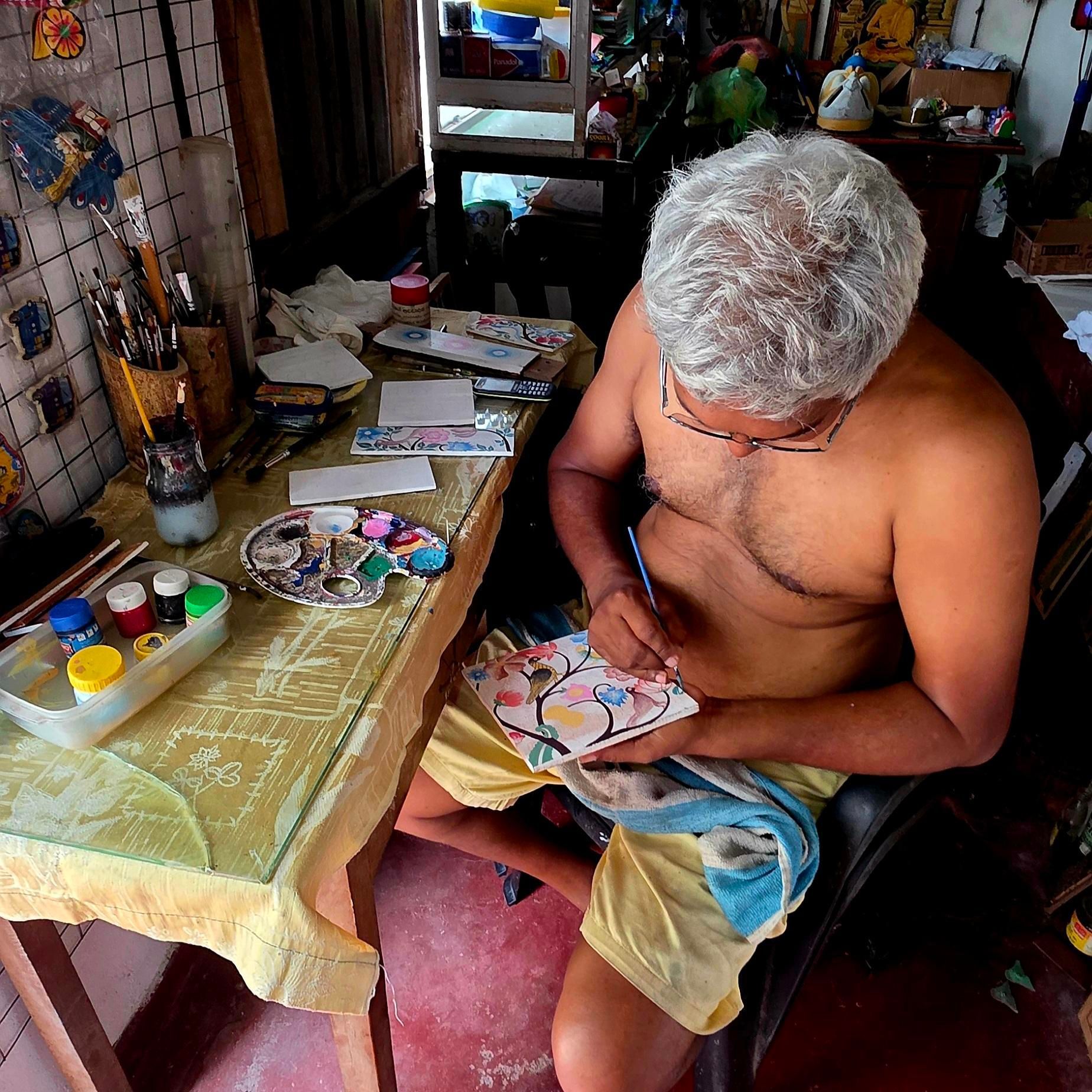
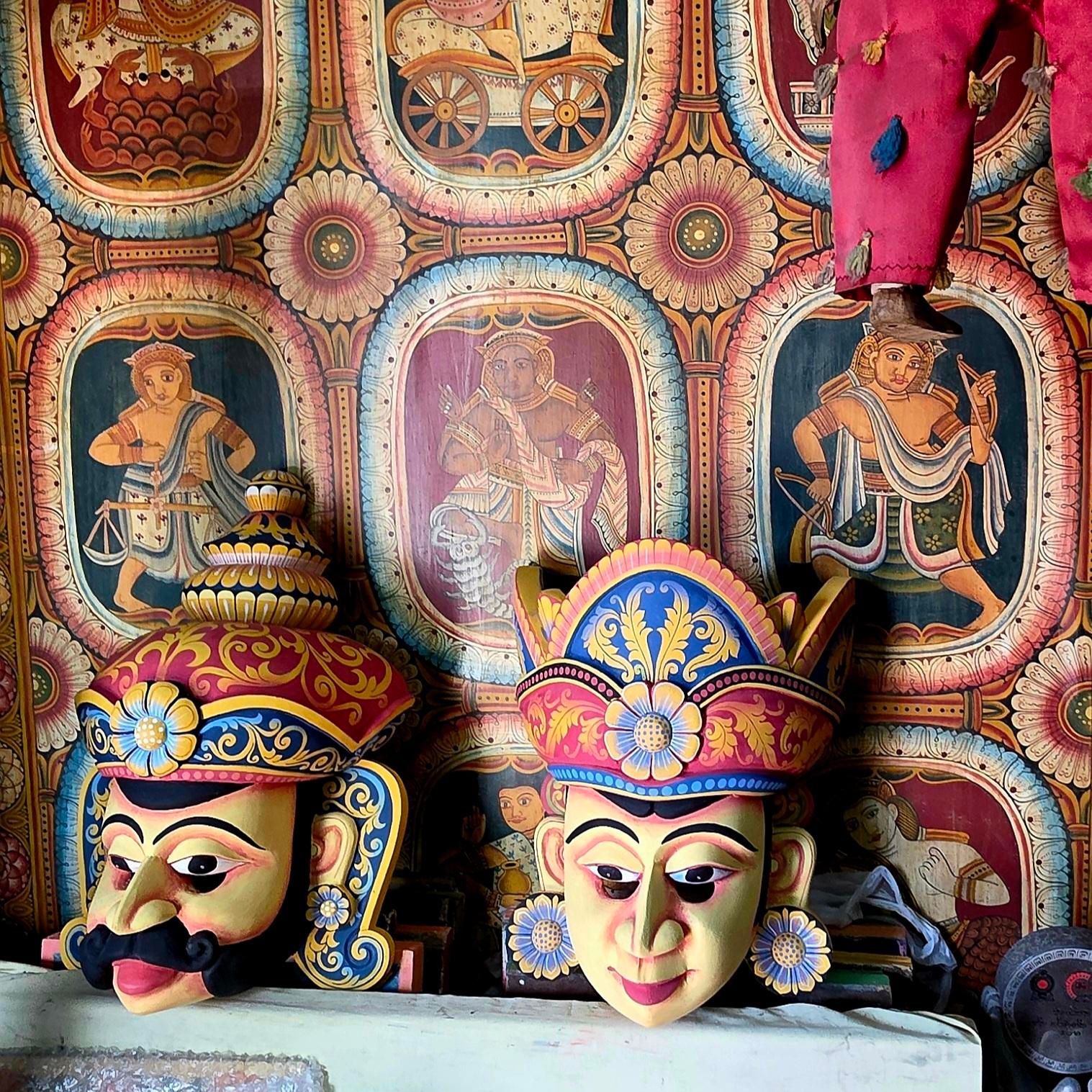
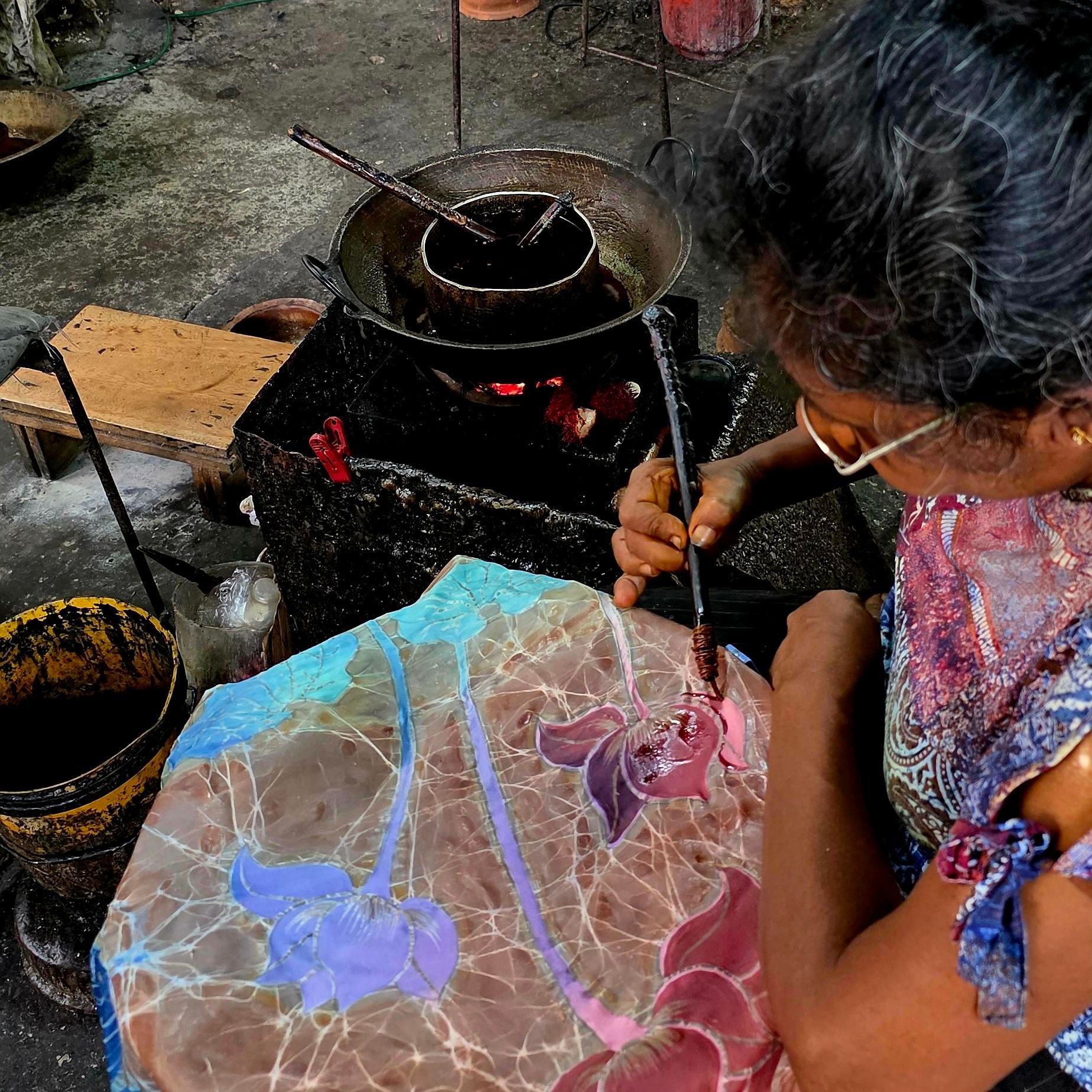
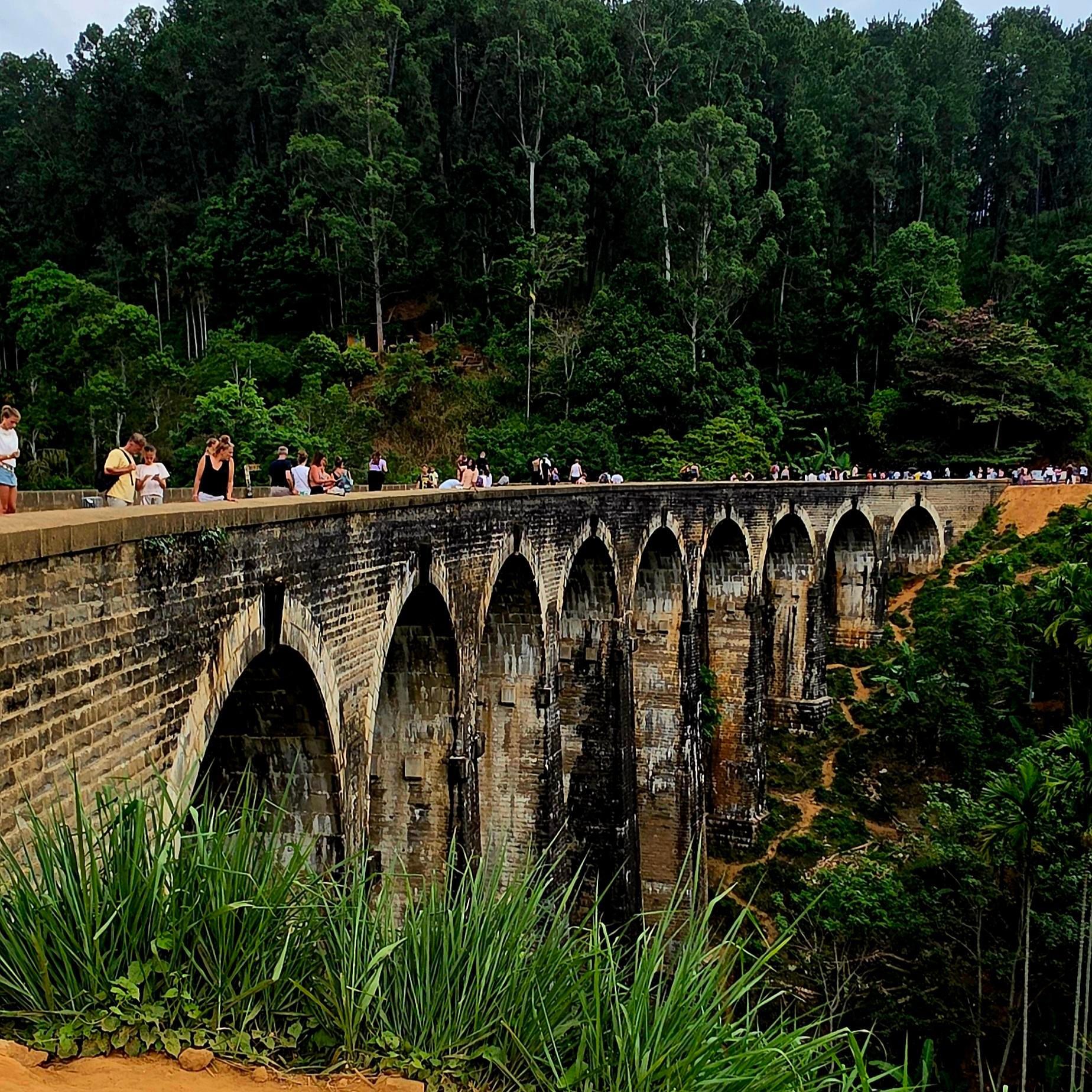
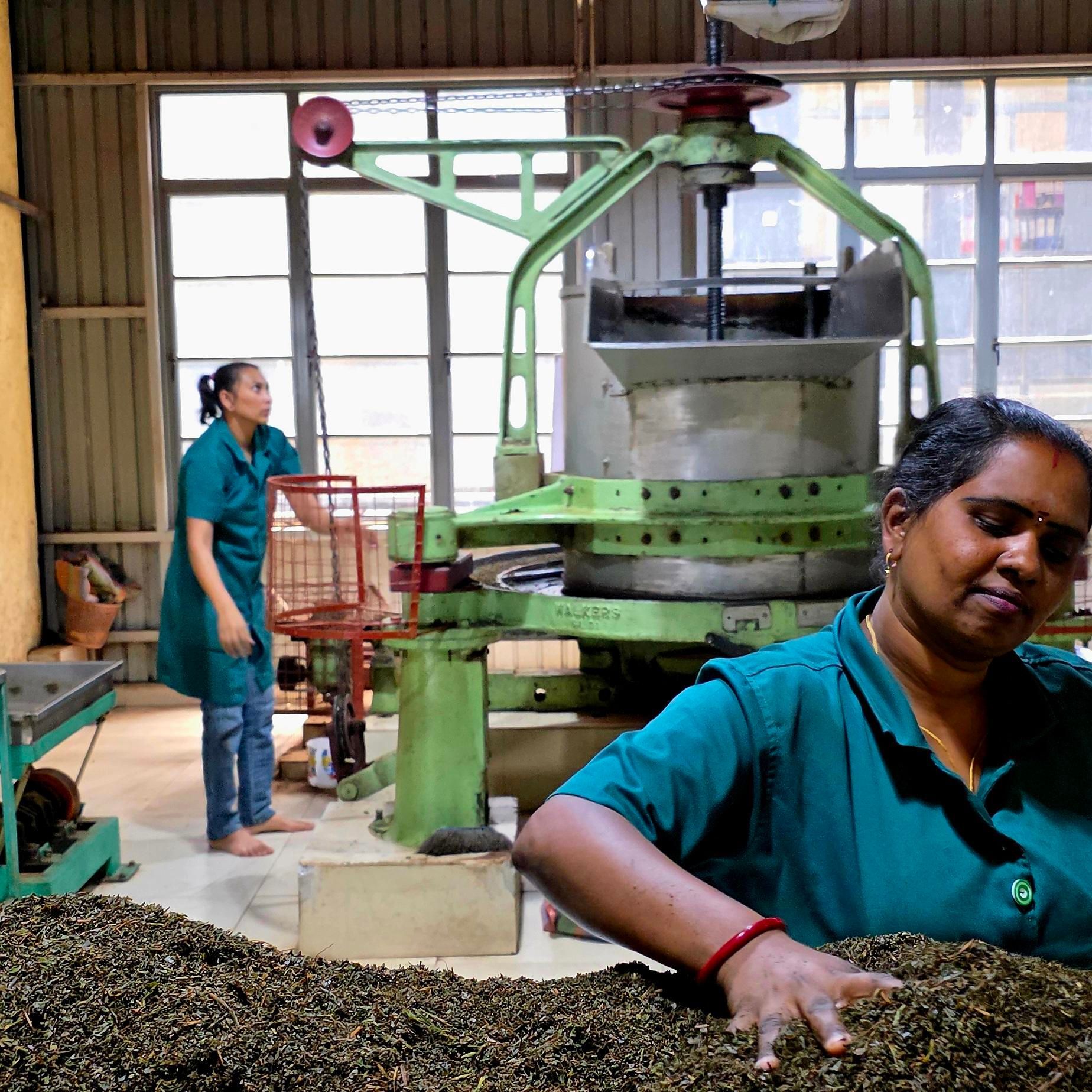
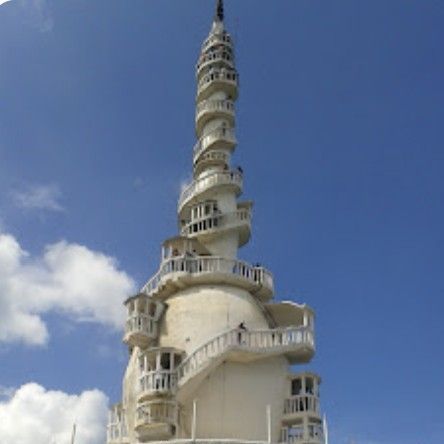
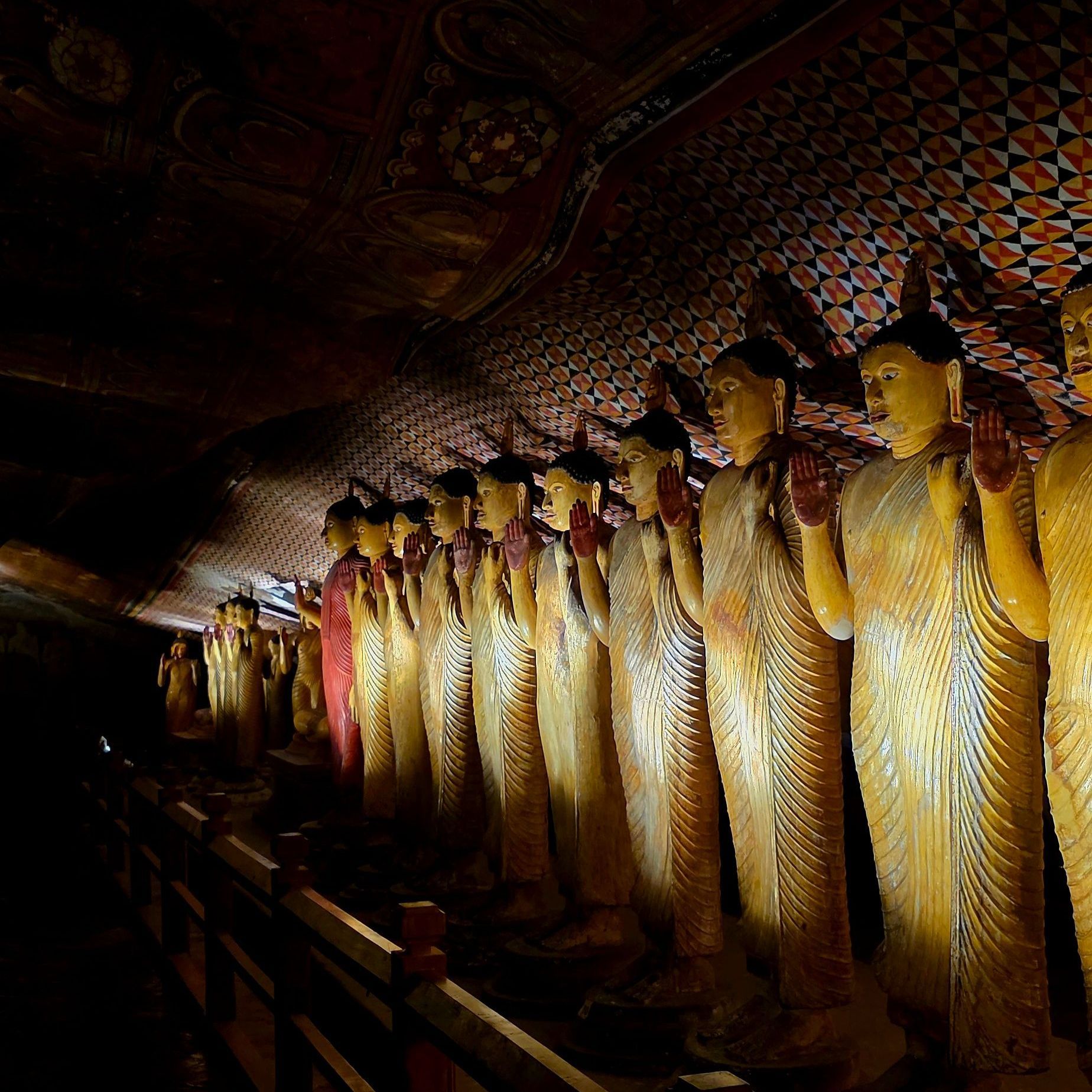
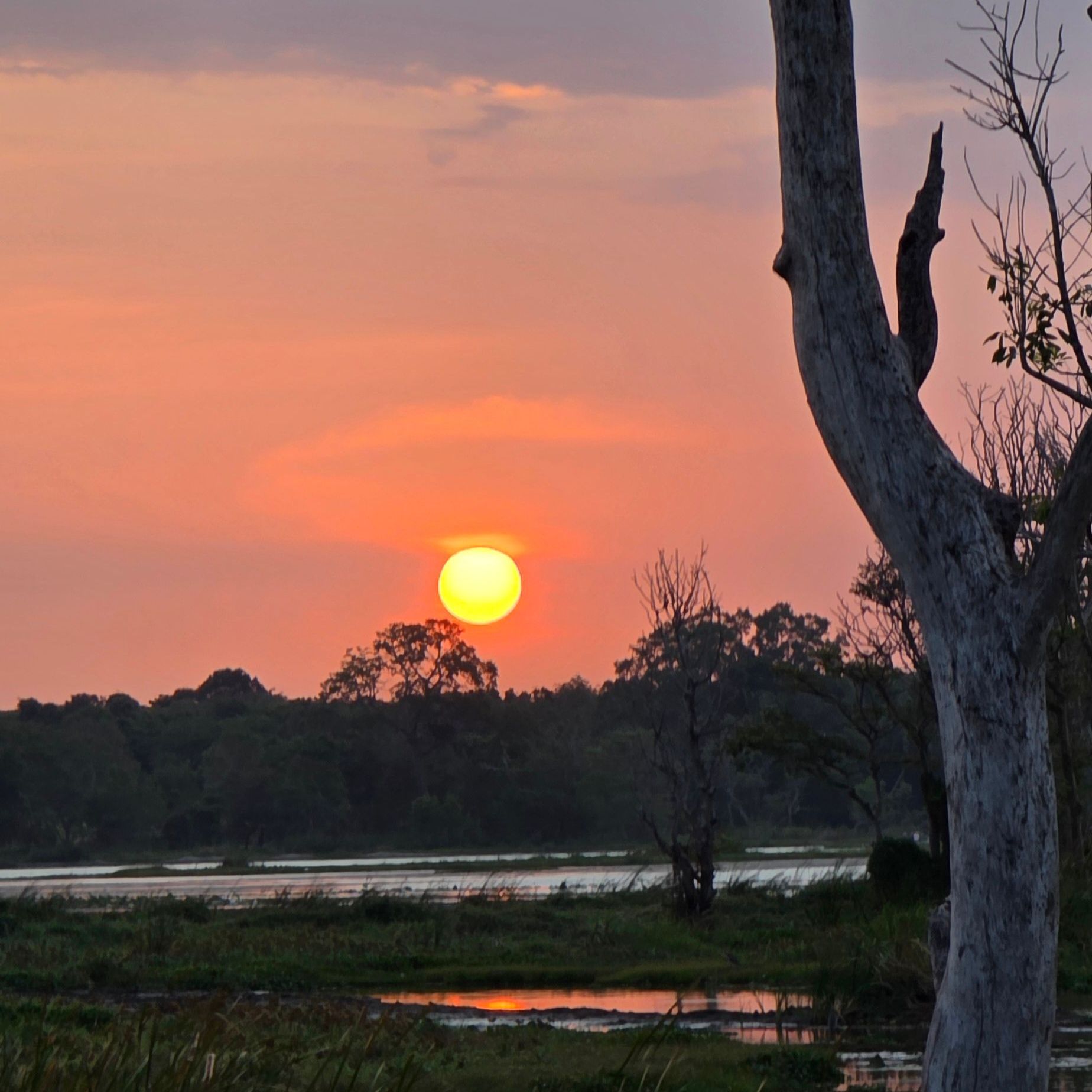
Sri Lanka - Crafts, Culture & Tropical Paradise
Sri Lanka - a glittering jewel in the Indian Ocean - invites you to wander through lush tropical forests, watch wild elephants roam free, breathe in the cool air of highland tea plantations, and experience a vibrant traditional crafts scene.
28 Aug - 10 Sept 2026
From
Duration
14 days /13 nights
Join us to explore Sri Lanka - soak up its tropical glory, wander through ancient Buddhist temples, and take your time ascending the World Heritage–listed Sigiriya. If climbing isn’t for you, relax in the serene lotus garden at the entrance and cheer on your travel buddies - an experience just as memorable.
Sri Lanka, a jewel of the oceans, moves to the rhythms of nature - mornings greet you with early starts, clear skies and time to adventure, afternoons invite a lazy poolside siesta, and evenings are made for lingering and enjoying the moment.
Small pockets of handloom weaving still thrive, and we’ll visit a village-based enterprise that is central to local prosperity. Mask making, another important cultural tradition, is rooted in the vibrant Devil Dance - a ritual once used to ward off illness. We’ll spend time with a master mask maker and, under their expert guidance, create our own mask to take home as a unique family keepsake.
Experience the peace of revered Buddhist temples, and witness how the influences of ancient traders and colonial powers have gently blended into the society of modern Sri Lanka.
Day 1 - Columbo, Sri Lanka ( 28 Aug 2026)
Arrive Colombo Bandaranaike International Airport
Arrive and time day or night, we will be there to collect you.
Day 2 - Colombo (29 Aug)
We will start the day exploring the historic Fort Area, throughout our journey you will notice distinct communities that live together and make up Sri Lankan culture.
On a short walking tour we will visit the striking Jami Ul-Alfar Mosque, the serene New Kathiresan Kovil Temple.
Onto the Gangaramaya Temple Buddhist Temple and their fascinating collection of offerings.
Barefoot is an landmark of Colombo.
It is a lovely shop, cafe and gallery but so much more.
In the early 1960s, Barbara Sansoni, an artist, was invited to design for women learning to weave in a convent workshop just north of Colombo. Today, Barefoot, the company she founded, has a band of dedicated designers providing training, designs, and raw materials. There are no factories and no production lines; each worker is responsible for the quality of his or her final product.
The quality of the products is a reflection to the philosophy behind its production, an inspiring place to visit and the rainbow of colours is mesmerising.
Cruise the shop and gallery, and grab lunch in the cafe.
The National Museum has a wonderful collection - it is a bit old and dusty but that just adds charm to some treasures tucked in there.
There are replicas of the murals from Sigiriya, take photos here because it is not allowed on the rock - they truly are mesmerising. I loved the almost mythical creatures on the old state flags - what would you have as your emblem?
We will go somewhere fabulous for a feast tonight to celebrate our upcoming journey.
B,L,D
Day 3 - Sigiriya (30 Aug)
You are going to hear a lot about elephants in the next few days.
Wild Elephants are plentiful in the area we are heading towards - unfortunately there are sometimes mishaps.
The Pinnawala Elephant Sanctuary - an orphanage was founded to care and protect the many orphaned unweaned wild elephants found wandering in and near the forests of Sri Lanka. It was established in 1975 by the Sri Lanka Department of Wildlife Conservation.
It was planned for the facility to attract local and foreign visitors, the income from which would help to maintain the orphanage. The grown elephants are retained within the facility mostly since they have become dependent on supplied food and having not grown up in a wild herd have no connections and will be unable to join a herd. A few disabled elephants are given residential care.
Chill out afternoon - our hotel has a lovely garden and pool, we'll chill out when we arrive and get ready for an early start tomorrow.
B,L
Day 4 - Sigiriya (31 Aug)
Sigiriya - Lion's Rock is an ancient rock fortress. It is a site of historical and archaeological significance that is dominated by a massive column of granite approximately 180 m (590 ft) high.
According to the ancient Sri Lankan chronicle the Cūḷavaṃsa, this area was a large forest, then after storms and landslides it became a hill and was selected by King Kashyapa (CE 477–495) for his new capital.
He built his palace on top of this rock and decorated its sides with colourful frescoes. On a small plateau about halfway up the side of this rock he built a gateway in the form of an enormous lion. The name of this place is derived from this structure; Sinhagiri, the Lion Rock.
The capital and the royal palace were abandoned after the king's death. It was used as a Buddhist monastery until the 14th century. Sigiriya today is a UNESCO listed World Heritage Site. It is one of the best preserved examples of ancient urban planning.
We are starting early to climb the rock - there is a good staircase and plenty of places to sit - join us and slowly wind your way to the top - the view is stunning and the murals on the rock face coming down are delightful.
If climbing is not your thing - you can still enjoy the beautiful Lotus in the Water Gardens below and cheer us on.
Back to the hotel for breakfast and take it easy for a while, this afternoon we head out on safaris.
Climb in your jeep we are heading out to see elephants in the wild, these fascinating creatures will be heading down to a lake in the National Park in the afternoon, it is a great time to see them.
Watching the jeeps and elephants nearby I wondered about whether it was 'right', but the drivers were careful to maintain a distance, there was always space for the elephants to wander and our entrance fees where allowing the park to continue to let these animals live in the wild and work to protect them from poachers.
B,D
Day 5 - Kandy (1 Sept)
Dambulla Cave Temple is also known as the Golden Temple of Dambulla. It is a sacred pilgrimage site for 22 centuries, this cave monastery, with its five sanctuaries, is the largest, best-preserved cave-temple complex in Sri Lanka. It is a World Heritage Site and contains so many beautiful statues and paintings.
Prehistoric Sri Lankans would have lived in these cave complexes before the arrival of Buddhism in Sri Lanka as there are burial sites with human skeletons about 2700 years old in this area, at Ibbankatuwa near the Dambulla cave complexes.
This temple complex dates back to the first century BCE, the monastery is still functional and remains the best-preserved ancient edifice in Sri Lanka.
We are heading to Kandy via the Matale area and well known for its Spice Gardens.
Kandy, historically an independent Sinhalese kingdom in Sri Lanka, is renowned for its resistance against Portuguese and Dutch colonizers, ultimately succumbing to British rule in 1815. It served as the last capital of the Sinhalese kings and is a UNESCO World Heritage site, particularly known for the Temple of the Tooth, a sacred Buddhist site.
Founded in 1476 by King Wickramabahu, Kandy initially operated as a semi-independent kingdom under the Kotte Kingdom.
Kandy successfully defended itself against the Portuguese and Dutch, becoming the last Sinhalese kingdom to fall under colonial rule.
Kandy's location in the central highlands, with its natural fortress-like surroundings, contributed to its ability to withstand attacks, but Dissatisfaction with their king led Kandyan chiefs to collaborate with the British in 1815, leading to the Kandyan Convention, which formally established British sovereignty.
Kandy's historical and cultural significance, particularly its association with the Temple of the Tooth and its role in preserving Sinhala culture, led to its designation as a UNESCO World Heritage Site.
We'll attend The Kandy Cultural Dance Show showcases traditional Kandyan dances, drumming, and fire walking.
B,L
Day 6 - Kandy (2 Sept)
We'll head out early to visit the Botanical Gardens, immaculately maintained, they are a delightful place to take a stroll.
Established as a royal garden in the 14th century and later expanded by the British, it features 4,000+ plant species, including rare orchids, towering palms, and historic trees planted by dignitaries like King George V.
We will then visit The Temple of the Sacred Tooth Relic, also known as Sri Dalada Maligawa, is a Buddhist temple in Kandy, Sri Lanka.
It is renowned for housing the relic of the tooth of the Buddha, a highly venerated object in Buddhism. The temple is located within the Royal Palace complex of the former Kingdom of Kandy.
Wander down to the local vegetable market - the vibrant colours and bustling atmosphere are interesting. You could pick up fresh fruits and traditional sweets for supplies.
We'll pop into Hela Bojun Hala. It is a unique food court concept launched as a government initiative to empower local women by providing them with safe and sustainable economic opportunities.
Situated next to the mall, above the parking lot, this airy outdoor space is a popular local hangout. A variety of stalls each offer their own traditional dishes, freshly prepared by the cook at that stall. No two stalls serve the same dish, ensuring plenty of variety without competition. Fantastic flavours!
Wood Carving is a respected local craft, and there is much to fine work to see.
What caught my eye was the demonstration of what to do with Sri Lankan Pathangy wood - in English it is known as sappanwood. Depending on pH and additives it produces many colours. Quite amazing - sappanwood gives a beautiful pink as a natural dye on cloth.
Natural dye circles love sappanwood for its red shades, in Sri Lanka it was apparently once use to produce colours to paint masks - although today it seems only modern paints are used in mask painting.
Evening free
B
Day 7 - Nuwara Eliya (3 Sept)
We'll head to the Ambuluwawa Tower first, is a rather amazing flight of fancy.
It is the inaugural Multi-Religious Center in Sri Lanka. Within there, a temple, a kovil - Hindu Temple, a mosque, and a church stand in harmony, representing the nation's peaceful living of diverse faiths.
It is one of the most unique places in Sri Lanka. The tower, spiraling high above the lush landscape, offers absolutely stunning 360-degree views of mountains, forests, and even the distant ocean on a clear day. The climb to the top is thrilling—narrow and a bit challenging, but totally worth it!
Great coffee and cake to get over the adrenalin rush of the climb.
As the road climbs higher we come into premium tea growing areas.
Along the way we will stop at a Tea Factory and Museum, taste a whole heap of different styles - you might never have known how many grades of tea there are.
Nuwara Eliya ('city on the plain' or 'city of light' in Sinhala) is located in the Highlands in one of the largest tea-producing areas in Sri Lanka.
Established by the British in the 19th century, Nuwara Eliya is Sri Lanka's highest town and often referred to as the island's 'Little England'. It is a very popular holiday destination in Sri Lanka, loved for the cool air, water sports on the lake and party atmosphere.
Nuwara Eliya is famous in Sri Lanka for being cool enough to produce strawberries, you'll notice many roadside vendors.
B,L
Day 8 - Ella (4 Sept)
In the morning we travel from Nanu Oya Station, via train to Ella – a journey often hailed as one of the most scenic train rides in the world.
Sit back, relax and soak up the view.
We have been eating so much fine food - tonight we will join two brothers and learn how to make some ourselves.
B,D
Day 9 - Ella (5 Sept)
Lipton's Peak
Nestled in the misty hills of Sri Lanka’s Uva Province is a living piece of Pure Ceylon Tea history in the form of Dambatenne Estate. Sprawling across the verdant slopes of Haputale, this iconic estate holds the legacy of one of the most famous names in tea - Sir Thomas Lipton. Dambatenne estate is where Lipton established his tea plantation and went on to establish Ceylon's reputation for quality brews.
Up on the top of his estate was his favourite picnic spot, now known as Lipton's Peak. We are jumping in tuktuks for the last part - too steep to drive and heading up there.
Bonus is a fabulous little cafe making great Sri Lankan snacks - tea and snacks with a fabulous view.
Day 10 - Unawatuna Beach (6 Sept)
We are heading towards the coast today.
We are visiting the workshop of a woman who could be described as Batik Royalty in Sri Lanka, her career spans 65 years and counting.
Batik, once an ancient craft in Sri Lanka, was traditionally used to create vibrant temple flags. During colonial times, it faded from practice when religious processions were banned. In more recent years, however, batik has enjoyed a renaissance, reclaiming its place as a cherished expression of Sri Lankan culture.
We will try our hand at batik, producing a number of scarves and are invited to share lunch with the family.
Home for the next few nights is right on the beach, the only thing between us and the water is a few palm trees - paradise!
B,L,D
Day 11 - Unawatuna Beach (7 Sept)
Historic Galle Fort is an interesting place to wander around, check out the ramparts, inside is a narrow lanes and plenty of interesting shops.
Lets wander, grab lunch and meet up under a huge banyan tree.
In 1976, Sooriya Handloom Weaving Mills was founded by Mr. and Mrs. Sooriyaarachchi, drawing inspiration from the first part of their surname, “Sooriya” — the Sinhalese word for “Sun.” Just as the sun brings energy to the world, the Sooriya Weaving Mill was established with the vision of revitalizing Sri Lanka’s traditional handloom industry. This family-owned and operated business is now proudly managed by Mrs. Sooriyaarachchi and her son, Mr. Chandana Sooriyarachchi.
They provide a lot of employment to local villages and manage the whole process of cloth production in house from thread dying to weaving to garment production. Fabulous energy to the place with some of the staff being there for almost 40 years.
This afternoon, we’ll enjoy a tranquil boat ride on Koggala Lake, gliding across the water surrounded by mangroves, monkeys, crocodiles, and all manner of birdlife. Along the way, we’ll stop at a small island to visit a local family who produce cinnamon.
This village-based tourism initiative is one we are proud to support. You’ll be shown the traditional process of preparing cinnamon for drying - and if you’re feeling adventurous, you might even like to try it yourself.
B
Day 12 - Unawatuna Beach (8 Sept)
oday, we’ll join Mrs. Malani and some of her neighbours to learn the delicate art of lace making. It may not be quite as easy as they make it look, but we’re sure to share plenty of laughs as we give it a try.
We’ll be exploring Beeralu lace making, a craft with over 600 years of history in Sri Lanka. Believed to have been introduced by Malays from Indonesia, Beeralu enjoyed its golden age during the Portuguese and Dutch colonial periods. Today, thanks to the dedication of non-profits, entrepreneurs, and corporations, this beautiful tradition is experiencing a revival - empowering local communities, especially in the wake of the tsunami.
The name “Beeralu” comes from the Portuguese words bilro (bobbin) and renda (lace). It is still practiced mainly along the southern coast, in areas such as Galle, Weligama, and Matara. The process involves using bobbins to weave intricate designs, guided by a pattern placed on a lace pillow.
B, L
Day 13 - Colombo (9 Sept)
Sri Lanka is famous for its sapphires and blue moonstones. Both are dug by hand in small village mines, we will take a look at a moonstone mine, how they are polished and set ..... and of course the shop! Very tempting - be warned.
We will pop in to visit a Sea Turtle Rescue Project.
This place is home to a few turtles that are disabled and unable to live in the wild. They are also a hospital facility with vet on hand to heal turtles brought in by fisherman that are injured, with care many of them will be able to be released back to the sea.
One turtle I saw could not dive to fish - it had eaten plastic which trapped air in its body and it was too buoyant - in the wild it would have starved to death. Here with care and feeding it will eventually pass the plastic and regain its ability to dive.
You saw a Devil Dance at the Kandy Cultural Centre, today we visit a family workshop and learn a little more.
Sasantha will have masks carved and primed and ready for you to paint under his guidance.
The wood used is Balsa Wood and for Australians, the Customs Website says it must be clean, free of bark, insects, and other contaminants, and be declared upon arrival. It's recommended to have it treated (like varnished or painted) to minimize biosecurity risks.
Onto Colombo and a Celebratory Dinner tonight - let's toast a beautiful Isle, great company and wonderful adventures.
B,L,D
Day 14 - Departures (10 Sept 2026)
Departures from Colombo Bandaranaike International Airport
We'll drop you to your flight any time night or day.
B
Fitness
Physical Fitness for Sightseeing
This adventure is designed for enthusiastic, active travellers with a good general level of health and mobility.
To make the most of your experience, you’ll need to be comfortable walking for 3 to 4 hours a day - sometimes over uneven ground, up hills, and a few flights of stairs.
Getting in and out of local transport and navigating occasional over-the-bath showers may also be part of the journey.
If you’re up for a bit of daily movement and love immersing yourself on foot, you’ll thrive on this tour.
Just a heads-up - it is not be the best match for those who like to take things very slowly or need lots of rest stops along the way.
Group Size
8 - 14
Booking Status
Bookings Open
Tour Location
Sri Lanka
Tour Information
Tour Pricing
- Share with a Friend: AUD $6650 each when booking two places at the same time, twin or double room share.
[AUD $6650= approx USD$4330]
- Mention if you are happy to share if someone is looking for a roommate.
- Private Room: Add AUD $1100
- Deposit: AUD $2600 due today secures your place.
- Early Bird Bonus: Book by 15 Jan 2025 to receive a AUD $200 rebate.
- Triple Treat Bonus? Every 3rd trip earn AUD $300 discount and our appreciation.
Destination Notes-
to help you prepare.
Inspirational Reading List.
Inclusions
Expert instruction by local artisans
Solo Traveller friendly
Well-chosen accommodation
Fully hosted by our CAS teams with local guides
Carefully curated itinerary
Airport pick up & drop off
All breakfast and most other meals
Exclusions
Flights
Visa, if needed
Travel insurance
Laundry
Gratuities

